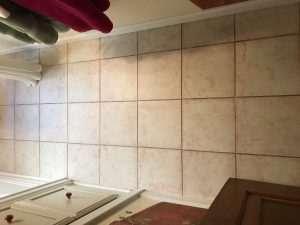What Are Common Grouting Mistakes Colorado Homeowners Should Avoid?
Tile installations in Colorado homes offer a blend of beauty and durability, but the success of any tile project hinges significantly on the quality of the grouting. Grout, while often overlooked, plays a critical role in protecting the tile, preventing water damage, and contributing to the overall aesthetic. Avoiding common grouting mistakes is paramount to achieving a long-lasting and visually appealing result.
Grouting Mistakes: Improper Mixing and Application

Avoid common grouting mistakes like uneven lines and cracks to ensure a flawless, durable finish in your Colorado home.
One of the most frequent grouting mistakes is improper mixing and application. Grout is a precise material, and getting this step right is crucial for its strength and adhesion.
- Incorrect Water-to-Grout Ratio: Adding too much or too little water can significantly weaken the grout. Follow the manufacturer’s instructions exactly to achieve the correct consistency.
- Inadequate Mixing: Grout needs to be mixed thoroughly to ensure all ingredients are properly combined. Inadequate mixing can result in inconsistent color, poor strength, and a crumbly texture.
- Using Expired Grout: Grout has a shelf life. Using expired grout can lead to poor performance and premature failure. Always check the expiration date before using.
- Improper Application Technique: Applying grout incorrectly, such as packing it too loosely or leaving voids, can compromise its ability to support the tile and prevent water intrusion.
- Delaying Grout Application: Waiting too long after mixing the grout before application can cause it to start setting, making it difficult to work with and reducing its strength.
Careful attention to mixing and application is paramount to avoid these grouting mistakes and ensure a durable and aesthetically pleasing result.
Neglecting Proper Surface Preparation and Curing: Leading to Premature Grout Failure
Even with perfectly mixed and applied grout, neglecting proper surface preparation and curing can lead to premature grout failure. These steps are essential for ensuring the grout bonds correctly and achieve its full strength.
- Inadequate Cleaning: Failing to thoroughly clean the tile joints before grouting can leave debris that interferes with grout adhesion.
- Insufficient Dampening: Some types of tile require dampening before grouting to prevent the tile from absorbing moisture from the grout too quickly. Neglecting this step can lead to weak grout.
- Improper Curing: Grout needs time to cure properly. Failing to follow the manufacturer’s curing instructions, such as misting the grout with water or covering it, can result in weak and brittle grout.
- Grouting Over Moving Substrates: Grout is not designed to flex. If the substrate (the surface beneath the tile) is not stable, the grout will likely crack.
- Using the Wrong Grout Type: Different grout types are designed for different applications. Using the wrong type, such as sanded grout where unsanded grout is needed, can lead to problems.
Proper surface preparation and curing are just as important as the grouting process itself. Avoiding these grouting mistakes will contribute to the longevity and beauty of your tile installation.
Prevent costly repairs and future headaches by avoiding common grouting mistakes from the start. The Grout Specialist offers professional tile and grout services that prioritize proper techniques and high-quality materials, saving you time and money in the long run. Invest in a durable and aesthetically pleasing tile installation with our expert guidance. Reach out to us today to discuss your tile and grout needs and protect your investment.




